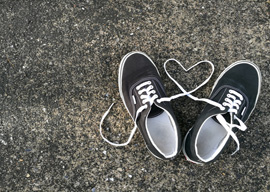
September 09, 2017

Source: Bigstock
No doubt it is a sign of advancing age, and also of retirement, that these days I always take a siesta. This increases my productivity greatly, for I am energetically clearheaded only for an hour at a time, and always soon after I have fully woken up. After about an hour, it is downhill all the way.
Whenever I emerge from the oneiric state between sleep and full consciousness, however, I do so—now twice a day—with a feeling of deep regret. I love the state, half asleep, half awake, in which you dream but know that you are dreaming. I have trained myself to prolong it as much as possible, for example by refusing to open my eyes. My dreams in this state are not necessarily pleasant, but they are not nightmares, either. They have a more important quality, that of being interesting, at least to me, though I hardly remember any of them once I am fully awake.
It is like having an endogenous or built-in entertainment system, rather similar to those screens on the back of airline seats that draw your eyes to them even though you want to read your book. I suppose my taste for the oneiric should make me more tolerant of those who spend their days glued to screens of one kind or another and feel agitated or uncomfortable if forced to look upon what we once called the real world. For many people now, what happens on a screen is the real, and the formerly real is the virtual. We live in a kind of Bishop Berkeley world, in which to be is to be perceived—via a screen, of course.
But why should I feel such regret when I leave my oneiric state and am plunged once more into what I, being the child of a different age, still think of as the real world? My life is a comparatively good one: I lack for nothing essential, I have plenty to interest me—sometimes too much, in fact, and it threatens to overwhelm me.
The Anglo-American litterateur Logan Pearsall Smith (I think it was) knew a man who was so appalled at the prospect of having to put on his shoes and tie his shoelaces every day for the next fifty years that he committed suicide. Trivial as this may seem as a reason for not wanting to live, I understand it.
Let us suppose that it takes a minute to put on one’s shoes and tie the laces. (One is quicker in one’s youth and slower as one ages: Let us average it out.) That is six hours a year spent on this uninteresting task, or three hundred hours over fifty years. Three hundred hours is twelve and a half days, nearly two weeks, or (if one includes the time needed for sleep) three. This is appalling: Imagine three weeks devoted to nothing else but putting on one’s shoes and tying the laces! It would drive one mad—and I have not even included the time necessary to untie one’s laces and remove one’s shoes. Let us suppose that this takes half as long (in my case and unrealistic assumption, since knots difficult to untie quite often somehow insinuate themselves into my laces): We are now up to nearly five weeks, more than a month at any rate, during which one does nothing but putting on and taking off one’s shoes.
Then there is the buying of them, the repairing of them, the polishing of them: In aggregate, then, shall we say we spend two months devoted to one’s footwear, even if one is as far removed from Imelda Marcos as it is possible to be?
But, you might say, this is only but a very minor part of life, and so it is. Unfortunately, life is composed of very minor parts. Think of all the other things you have to do, no more interesting than putting on your shoes and tying your laces. I have to shave every day, for example: There goes another month or two. And brushing one’s teeth, three times a day: Surely that is another month at least of earthly existence spent on an uninteresting routine. Seeking or preparing food, though it may end in pleasure, is yet another such task. Before long, one realizes that one spends a great deal of one’s life, probably the majority, on things no more interesting than putting on one’s shoes.